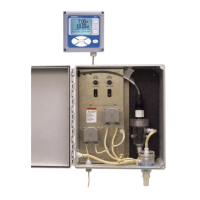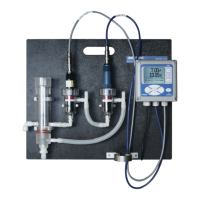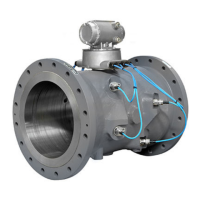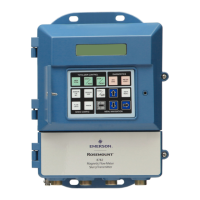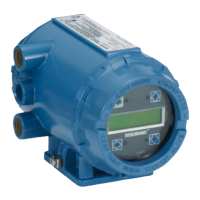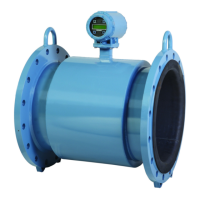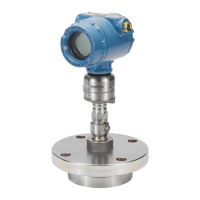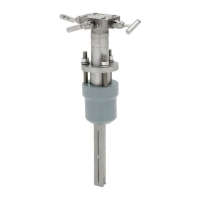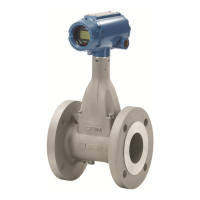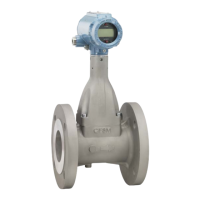Rosemount Model 1195/ProPlate/Mass ProPlate
4-6
Before pressurizing the system, check for leaks by doing the following:
1. Open equalizer valve(s) MEH, MEL or ME to prevent
overpressuring the DP.
2. Close valves PH, PL (unless the piping system is also being
pressure-checked), MV, DVH, DVL.
• If present, also close valves BH and BL or DH and DL.
3. Open valves MH and ML.
4. Install all appropriate tapped plugs.
5. Install a current meter to read the signal, if necessary.
Apply pressure at a convenient point on either the high or low side of
the system. Use a suitable leak detection solution and apply to all of the
impulse piping, valves, manifold, and connections. A leak is indicated
by a continuous stream of bubbles.
5-Valve Manifolds
If a 5-valve manifold is installed, the equalizer valves can be tested by
performing the following after system leaks are repaired and the
system is stable:
1. Close equalizer valves MEH and MEL.
2. Open vent valve MV. There should be no leakage from the
manifold vent.
3. Close vent valve MV.
4. Open equalizer valves MEH and MEL.
5. Bleed off the air and remove the source fitting.
6. Return the system to the original configuration. Use extreme
care when bleeding high temperature fluids. Bleed piping may need
to be installed.
“Calibrate Out”
Temperature Effects
Do not begin this procedure until the system leak check has been
completed and all leaks have been fixed.
The ProPlate’s proportional output-to-flow ratio makes a true “zero”
calibration critical for producing accurate measurements. The “zero”
calibration procedure is affected by static pressure and ambient
temperature, but these effects can be removed by calibrating them
“out.”
The effect of static pressure is calibrated out by exposing the ProPlate
electronics to the line pressure and performing a “zero” or wet
calibration, as described below. In order to calibrate out the effect of
ambient temperature, two aspects should be taken into consideration:
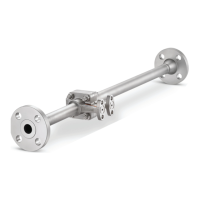
